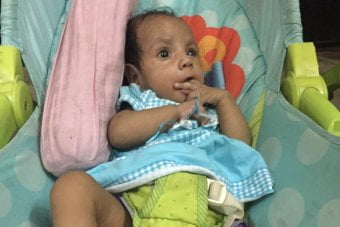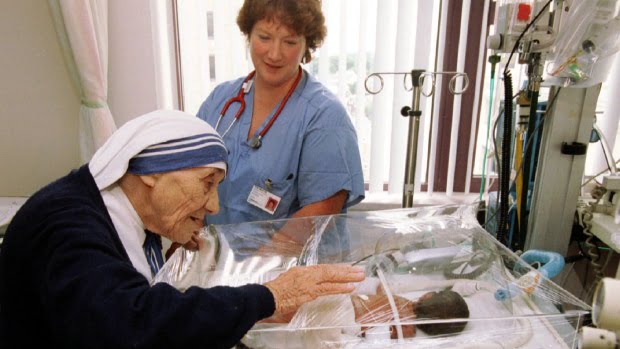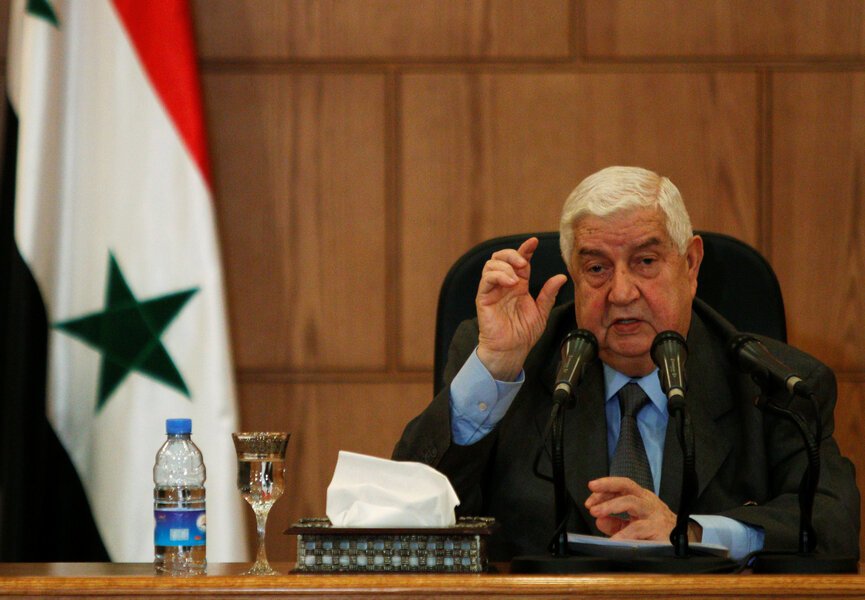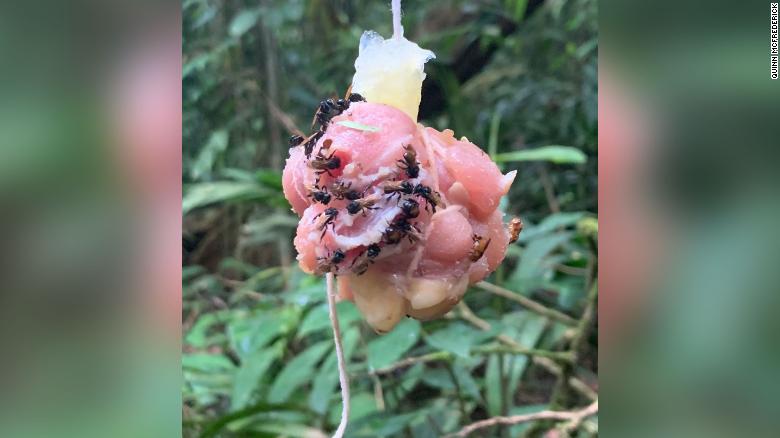
The nun, from the Missionaries of Charity order founded by Mother Teresa in 1950, points to a bassinet.
“This child lost her mother at the birth,” she says.
“She delivered triplets … and the husband did not take her to the hospital for birth. The mother died and the two other siblings died.”
 PHOTO: Hirashmi has been taken in by the Missionaries of Charity order. (ABC News: James Bennett)
PHOTO: Hirashmi has been taken in by the Missionaries of Charity order. (ABC News: James Bennett)The baby girl’s name is Hirashmi. She is five months old.
Sister Joan of Arc says the girl has a father and grandmother, but they cannot care for her.
The facility, she says, can accommodate about 100 to 130 people. Sister Joan of Arc cares for roughly 50 smaller children.
The majority, she says, have similar stories to baby Hirashmi.
“Mostly they are from the footpath, [train] stations, severely malnourished,” she says.
Shishu Bhavan is one of the Missionaries of Charity’s oldest homes.
Today the order, more than 5,000 strong globally, cares for impoverished, ill and aging people in more than 130 countries, with homes like Shishu Bhavan for orphans, but also hospices for the dying, AIDS and leprosy patients, centres for women and soup kitchens to feed the homeless.
A life-changing legacy
“I wouldn’t be sitting here talking to you if she [Mother Teresa] wasn’t in my life,” Gautam Lewis says simply.
The orphan and polio survivor is one of thousands who passed through Shishu Bhavan, but his is a remarkable tale of luck and success.
 PHOTO: Mother Teresa’s nuns took polio survivor Gautam Lewis in. (ABC News: James Bennett)
PHOTO: Mother Teresa’s nuns took polio survivor Gautam Lewis in. (ABC News: James Bennett)“I survived polio at a time and a place in Kolkata where one in five children were dying of polio, then restarted my life in the care of Mother Teresa,” he says.
Born in Kolkata (then Calcutta) in approximately 1977 to destitute parents, he was taken in by Mother Teresa’s nuns.
“Mother Teresa was the root that changed my destiny from poverty to everything else,” he says.
He was later adopted and raised in the UK, where he has worked in the music industry, learnt to fly and built a charity himself to give underprivileged children a chance to take to the air.
Mr Lewis says he could not face India for many years, partially because he felt guilt for his personal good fortune.
But he has now made several trips, exploring his past with a self-made documentary and photography exhibition paying homage to Mother Teresa’s work and those who have continued it after her death.
“I do remember there was no favourite one of Mother Teresa. All of her children were equals,” he says.
An example, an inspiration
Archbishop Thomas D’Souza, the leader of Kolkata’s Catholic Archdiocese, says Mother Teresa was a transformative figure because she made those she assisted feel valued.
“That was Mother’s greatness,” he says.
A mere 1 per cent of greater Kolkata’s 14 million citizens are Catholic, but Archbishop D’Souza says the soon-to-be-saint’s willingness to extend her hand to the city’s poor and outcast cut through religious boundaries.
“The initiative she took to look after the poor in different ways, whether they be lepers, downcasts, HIV-aids, dying, etcetera, all this, she has done all this for Kolkata and has inspired us to do the same,” he says.
 PHOTO: Gautam Lewis is one of thousands of children who passed through Shishu Bhavan. (Supplied: Gautam Lewis)
PHOTO: Gautam Lewis is one of thousands of children who passed through Shishu Bhavan. (Supplied: Gautam Lewis)But critics remain
While her work is widely lauded, Mother Teresa’s methods and beliefs are not universally acclaimed.
She has long been criticised for her staunch anti-abortion views and controversy has surrounded claims she sought to convert dying patients to Catholicism.
Author Aroup Chatterjee, who researched and wrote Mother Teresa: The Untold Story, says there were many documented cases of poor hygiene in the homes she ran.
“I do not think there was any need for re-using needles, which she did as a matter of principle in her so-called home for the dying,” Dr Chatterjee says.
In 1994, several years before Mother Teresa died, British Medical Journal The Lancet also documented evidence of poor medical practices in her facilities.
The Missionaries of Charity says it has since stopped re-using needles and sought to address the shortcomings in its care.
Archbishop D’Souza says Mother Teresa accepted the criticism as part of doing “God’s work”.
 PHOTO: Mother Teresa’s Missionaries of Charity continues her work today. (Reuters: Rupak De Chowdhuri)
PHOTO: Mother Teresa’s Missionaries of Charity continues her work today. (Reuters: Rupak De Chowdhuri)The work goes on
At the affectionately known “mother house”, on Kolkata’s AJC Bose road, where Mother Teresa lies interred, the nuns carrying on her work will tonight hold a mass to mark her canonization.
But the work will continue.
“It’s our mission to reach out to the very poor,” Sister Joan of Arc, who came to India from southern Germany, says.
[Source:-ABC Online]





